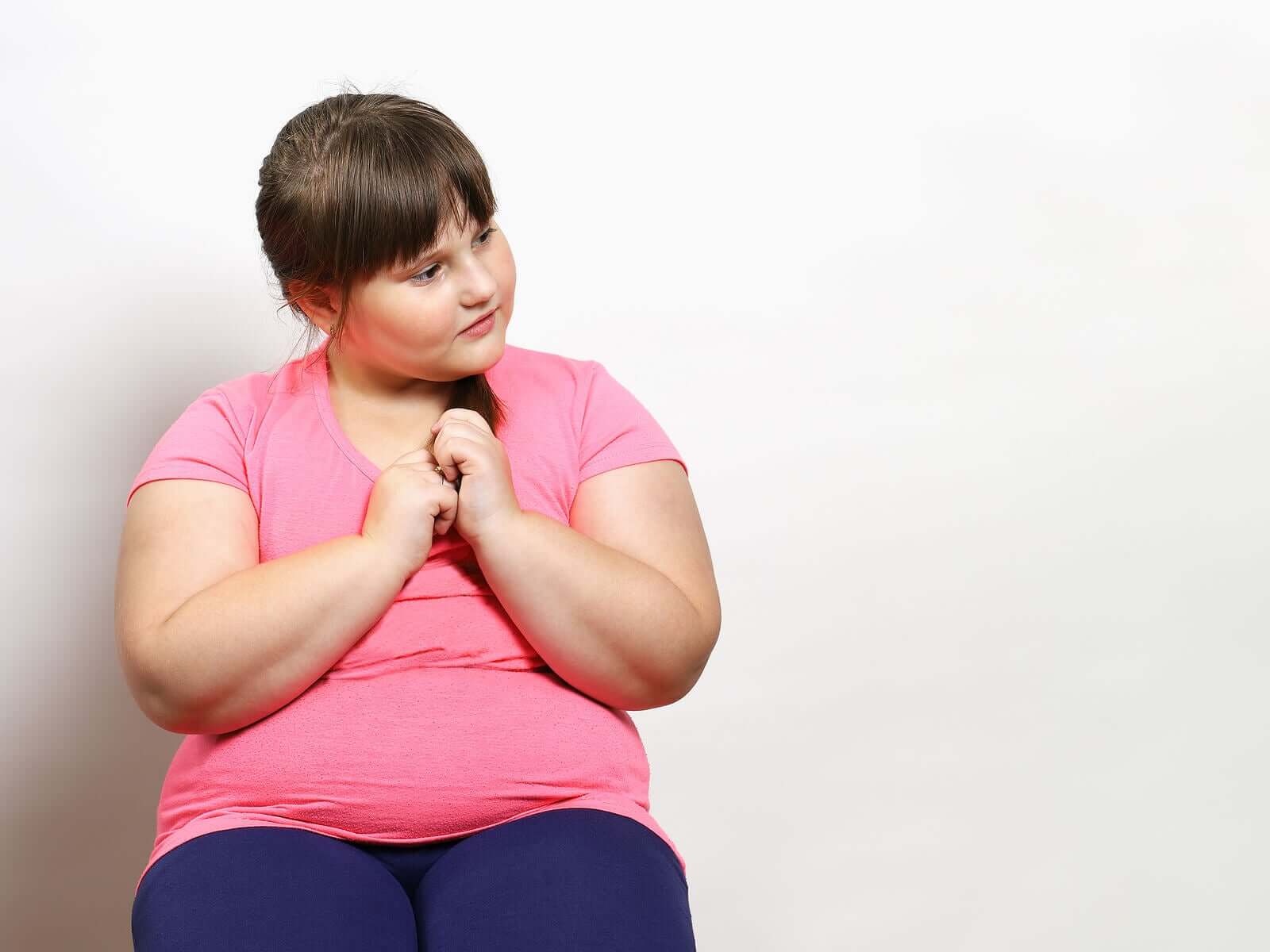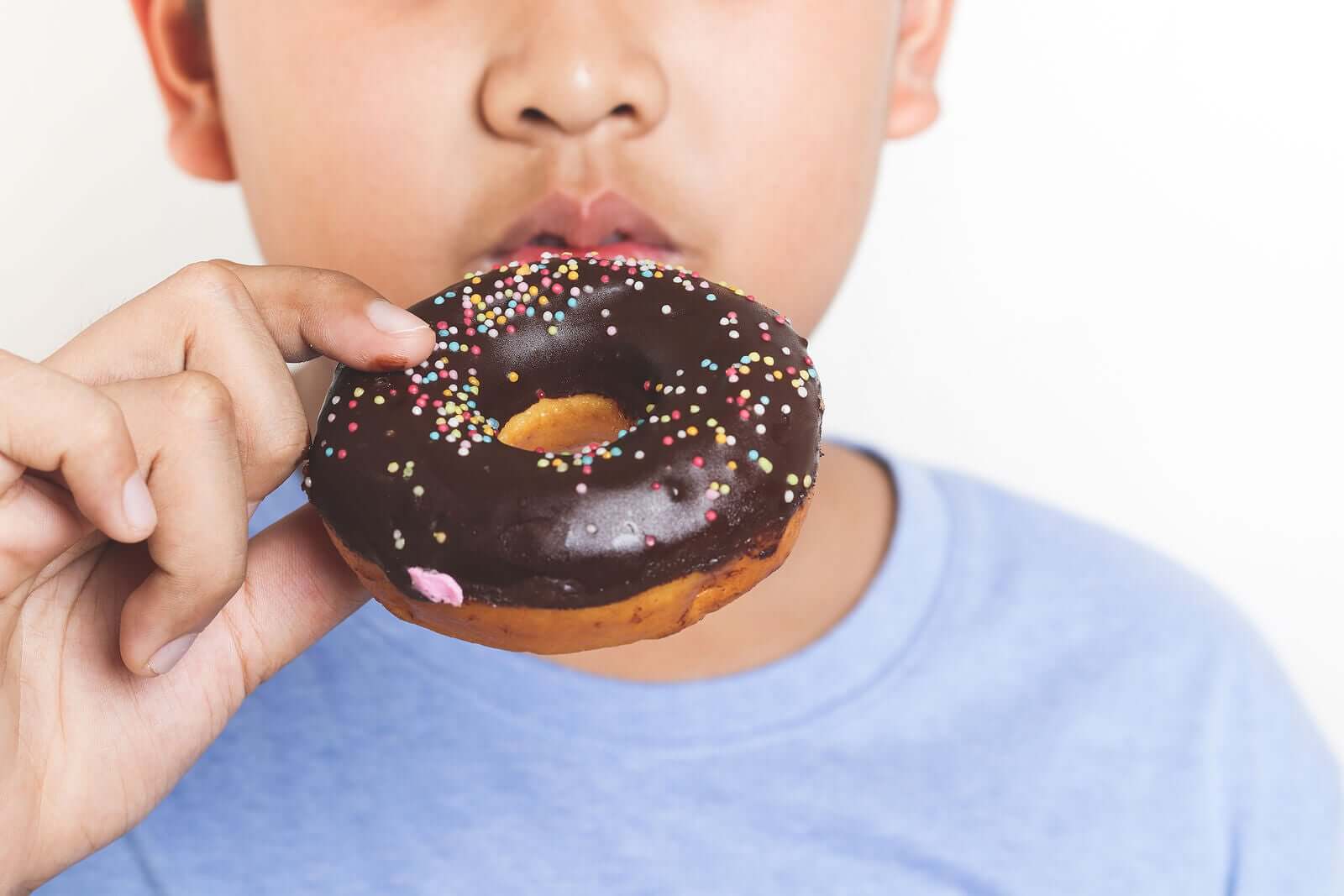Weight Loss Goals for Overweight Children

Childhood obesity shouldn’t be overlooked. In order to help overweight children, it’s necessary to set specific weight loss goals.
First of all, it’s important to bear in mind that being overweight is a health problem and people should face it, no matter their age. Therefore, thinking that children will have time in the future to lose weight isn’t an excuse to sit back and do nothing.
Parents are absolutely responsible for their children’s health. This includes doing everything that’s necessary to help them maintain a healthy diet and weight. In fact, if you don’t help them during childhood, in most cases, their weight problems continue existing when they grow up. Don’t forget that, according to the World Health Organization (WHO), childhood obesity is one of the biggest problems of the 21st century.

Weight loss goals for overweight children: stop gaining weight
The first goal for overweight children is to help them stop gaining weight, while they continue growing in height. To control this, you should measure their weight every week.
Maintaining their weight is less drastic than losing it. You can do this by making small changes in their diet. This way, they start leaving aside all the unhealthy habits responsible for their weight gain.
At first, they should reduce their calorie consumption. Of course, this doesn’t mean they should stop eating. It means, they should substitute high-calorie and fatty foods for healthier products. For example, they can use whole grain bread (which is more satisfying) for their sandwiches, and eat more fruits and vegetables.
In addition, they should eat more fiber, not only because it improves the intestine function, but it also has a satisfying effect. Other products they should eliminate are sodas and ultra-processed foods.
Finally, it’s very important that children do physical activity. This doesn’t mean they should join a sports club, at least not for the moment. They should start moving more, like using the stairs instead of the elevator, or walking to different places.
Overweight children: set weight loss goals and objectives
Once children stop gaining weight and start adopting healthier habits, it’s time to set specific weight loss goals and objectives.
This shouldn’t be too demanding, because it may discourage them from doing it. Changes must occur little by little, and you should always celebrate their achievements, without becoming obsessed.
The last thing you want is that your children become self-conscious teenagers with eating disorders. This is why it’s also very important to ask a specialist for help. A professional will help your child follow a balanced diet.
The role of parents in preventing childhood obesity
Many overweight children don’t solve their problems because their parents or caregivers don’t take the necessary measures to help them. We all know that it’s easier to give them a chocolate bar or a cookie instead of preparing them a healthy snack.
The same happens in the case of meals. It’s easy and fast to give them ultra-processed food, which is also tasty. As a result, you avoid dealing with the usual “I don’t like it.” Also, to cook those meals you don’t need much preparation. Similarly, when it comes to physical activity, children need time and dedication.

Parents should set an example and make a commitment
And, this is the crux of the matter. Many children are obese since nobody does anything to help them, because it requires effort and hard work. Parents might also think they’ll always have time to help them in the future.
In addition to the effort parents make when buying and preparing healthy food, they find themselves in another predicament: if their children eat healthy food, they should do it, too. It’s not fair to forbid your children from eating certain foods when you continue consuming them yourself.
In the same vein, parents should also do physical activity, in order to set an example for their children. Actually, you can plan this as a family challenge, because it’s not just about the extra weight, it’s also about adopting healthy habits. Since a bad diet and a sedentary lifestyle cause many more problems than just being overweight, you should follow a healthy diet and incorporate physical activity into your daily lifestyle.
Childhood obesity shouldn’t be overlooked. In order to help overweight children, it’s necessary to set specific weight loss goals.
First of all, it’s important to bear in mind that being overweight is a health problem and people should face it, no matter their age. Therefore, thinking that children will have time in the future to lose weight isn’t an excuse to sit back and do nothing.
Parents are absolutely responsible for their children’s health. This includes doing everything that’s necessary to help them maintain a healthy diet and weight. In fact, if you don’t help them during childhood, in most cases, their weight problems continue existing when they grow up. Don’t forget that, according to the World Health Organization (WHO), childhood obesity is one of the biggest problems of the 21st century.

Weight loss goals for overweight children: stop gaining weight
The first goal for overweight children is to help them stop gaining weight, while they continue growing in height. To control this, you should measure their weight every week.
Maintaining their weight is less drastic than losing it. You can do this by making small changes in their diet. This way, they start leaving aside all the unhealthy habits responsible for their weight gain.
At first, they should reduce their calorie consumption. Of course, this doesn’t mean they should stop eating. It means, they should substitute high-calorie and fatty foods for healthier products. For example, they can use whole grain bread (which is more satisfying) for their sandwiches, and eat more fruits and vegetables.
In addition, they should eat more fiber, not only because it improves the intestine function, but it also has a satisfying effect. Other products they should eliminate are sodas and ultra-processed foods.
Finally, it’s very important that children do physical activity. This doesn’t mean they should join a sports club, at least not for the moment. They should start moving more, like using the stairs instead of the elevator, or walking to different places.
Overweight children: set weight loss goals and objectives
Once children stop gaining weight and start adopting healthier habits, it’s time to set specific weight loss goals and objectives.
This shouldn’t be too demanding, because it may discourage them from doing it. Changes must occur little by little, and you should always celebrate their achievements, without becoming obsessed.
The last thing you want is that your children become self-conscious teenagers with eating disorders. This is why it’s also very important to ask a specialist for help. A professional will help your child follow a balanced diet.
The role of parents in preventing childhood obesity
Many overweight children don’t solve their problems because their parents or caregivers don’t take the necessary measures to help them. We all know that it’s easier to give them a chocolate bar or a cookie instead of preparing them a healthy snack.
The same happens in the case of meals. It’s easy and fast to give them ultra-processed food, which is also tasty. As a result, you avoid dealing with the usual “I don’t like it.” Also, to cook those meals you don’t need much preparation. Similarly, when it comes to physical activity, children need time and dedication.

Parents should set an example and make a commitment
And, this is the crux of the matter. Many children are obese since nobody does anything to help them, because it requires effort and hard work. Parents might also think they’ll always have time to help them in the future.
In addition to the effort parents make when buying and preparing healthy food, they find themselves in another predicament: if their children eat healthy food, they should do it, too. It’s not fair to forbid your children from eating certain foods when you continue consuming them yourself.
In the same vein, parents should also do physical activity, in order to set an example for their children. Actually, you can plan this as a family challenge, because it’s not just about the extra weight, it’s also about adopting healthy habits. Since a bad diet and a sedentary lifestyle cause many more problems than just being overweight, you should follow a healthy diet and incorporate physical activity into your daily lifestyle.
All cited sources were thoroughly reviewed by our team to ensure their quality, reliability, currency, and validity. The bibliography of this article was considered reliable and of academic or scientific accuracy.
- Defining Childhood Obesity | Overweight & Obesity | CDC. (2018). Disponible en https://www.cdc.gov/obesity/childhood/defining.html
- Jansen, A., Theunissen, N., Slechten, K., Nederkoorn, C., Boon, B., Mulkens, S., & Roefs, A. (2003). Overweight children overeat after exposure to food cues. Eating Behaviors, 4(2), 197–209. https://doi.org/10.1016/S1471-0153(03)00011-4
- León, M., Infantes Paniagua, Á., González Martí, I., y Contreras Jordán, O. (2018). Prevalencia de sobrepeso y obesidad infantil y su relación con factores sociodemográficos. Journal of Sport and Health Research , 10 (1), 163-172.
- Moreira, D., Rodríguez, V., Mera, J., Medrana, R., Medrana, F., & Avendaño, G. (2018). Factores de Riesgo más relevantes en el aumento de obesidad infantil. Revista Científica de Investigación Actualización Del Mundo de Las Ciencias, 2(4), 24–40. http://www.reciamuc.com/index.php/RECIAMUC/article/view/220%0Ahttp://reciamuc.com/index.php/es/article/view/213/pdf
- OMS. (2016). Comisión para acabar con la obesidad infantil. Organización Mundial de La Salud , 3-5. http://www.who.int/end-childhood-obesity/es/
- Stanford Children’s Health. (2018). Disponible en https://www.stanfordchildrens.org/en/topic/default?id=weight-management-and-adolescents-90-P01626
This text is provided for informational purposes only and does not replace consultation with a professional. If in doubt, consult your specialist.








